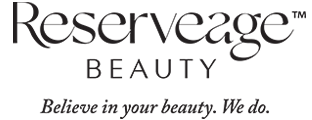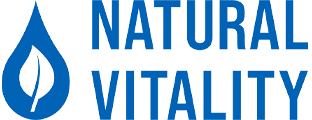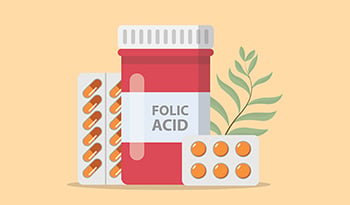Guide to Endocrine Disruptors and How to Avoid Them
Endocrine disrupters are everywhere. They’re found in food, water, air, and consumer products. You can’t typically see, taste, or smell them, but you can avoid them. Learn about endocrine disruptors, their effects, and how to reduce exposure in this comprehensive guide.
What Are Endocrine Disruptors?
Endocrine disruptors are natural or human-made chemicals that can interfere with the endocrine system—the network of glands (including the hypothalamus, thyroid, and pituitary) and organs (like the pancreas and ovaries) that create, store, and release hormones.
The Environmental Protection Agency (EPA) defines an endocrine disruptor as “an exogenous agent that interferes with synthesis, secretion, transport, metabolism, binding action, or elimination of natural blood-born hormones that are present in the body and responsible for homeostasis, reproduction, and developmental process.”1
Hormones are chemical messengers that travel through the bloodstream, control processes in the body, and allow cells to communicate with each other. People have over 50 different hormones with a wide variety of functions, ranging from managing stress (cortisol) and the female reproductive cycle (estrogen and progesterone) to regulating mood (serotonin, endorphins, and oxytocin) and metabolizing blood sugar (insulin) for energy.
Endocrine-disrupting chemicals (EDCs) can be natural or human-made. The many sources of these chemicals include plastics, pesticides, toys, nonstick cookware, preservatives, personal care products, pharmaceuticals, and industrial chemicals. Due to the health issues associated with endocrine-disrupting chemicals, public health organizations and regulatory agencies such as the Environmental Working Group, the Endocrine Society, and the Environmental Protection Agency are involved in studying and preventing EDCs.
While many EDCs should be avoided, not all are harmful. For example, soy endocrine disruptors (i.e., soy isoflavones) may offer health benefits for adult women, including improving menopausal symptoms like hot flashes and reducing the risk of osteoporosis, heart disease, and breast cancer.2
What Do Endocrine Disruptors Do?
Endocrine disruptors disrupt the way the endocrine system works, causing an array of adverse health effects. They do this in a variety of ways:
- Alter natural hormone levels: Some alter the levels of natural hormones in the body by interfering with the production, metabolism, transport, or elimination of hormones.
- Block hormone receptors: Others block hormone receptors on target cells, preventing hormonal activity and the desired response.
- Interfere with gene expression or mimic natural hormones: Still others cause havoc by interfering with gene expression or mimicking natural hormones, so the body overresponds to hormonal signals.
The endocrine system is complex and sensitive, so even a small amount of an EDC may cause issues.
Examples of Endocrine Disruptors
In the last 50 years, global production of plastics has increased sixfold from 50 million tons to nearly 300 million tons. As a result, people are exposed to more endocrine disruptors on a regular basis.
According to the Endocrine Society, there are 85,000 human-made chemicals in the world that people are exposed to daily.3 Over a thousand may be endocrine disruptors. The US Food and Drug Administration has identified over 1,800 chemicals that disrupt at least one of three endocrine pathways—estrogen, androgen, and thyroid.
Common examples of endocrine disruptors include:
- Brominated flame retardants (BFRs): BFRs reduce flammability in consumer products like clothing, furniture, and electronics.
- Polychlorinated biphenyls (PCBs): PCBs were banned by the EPA in 1979 but are still present in insulation, electrical equipment, and oil-based paints.
- Oxybenzone: Found in some sunscreens and products containing sun protection factor (SPF), oxybenzone can pass through skin and the placental barriers.
- Heavy metals: Heavy metals that are endocrine disruptors include lead, cadmium, mercury, and arsenic.
- Bisphenol A (BPA): BPA is found in cash register receipts and food can linings as well as plastic baby items made before 2011, including sippy cups, pacifiers, and baby bottles.
- Parabens: This group of chemicals is often added to cosmetics, foods, and drugs as a preservative.
- Pesticides: Pesticides are used on conventional, nonorganic produce to help prevent and control weeds, bugs, and fungi.
- Phthalates: Found in numerous products, including plastic wraps and food and beverage containers, these chemicals can leach into food and water—especially when microwaved.
- Per- and polyfluoroalkyl substances (PFAs): PFAs are used in many industrial and consumer products, such as firefighting foams, stain repellants, waterproof clothing, and nonstick cookware. They are known as “forever chemicals” because they don’t break down easily.
- Phytoestrogens: These estrogen-mimickers are found in plant foods like legumes—particularly soybeans and soy products like tofu, tempeh, and edamame.
- Dioxins: Dioxins are environmental pollutants that are a by-product of industrial processes, such as smelting and chlorine bleaching, and natural events like forest fires and volcanic eruptions.
Health Problems Caused by Endocrine Disruptors
While there are no specific endocrine disruption symptoms, hormone-disrupting chemicals are associated and linked with numerous health problems. These include:
- Infertility and reproductive issues in both men and women, such as endometriosis and polycystic ovary syndrome (PCOS)
- Menstrual cycle disorders, including PMS, cramps, and heavy periods
- Early menopause4
- Early puberty
- Fetal neurodevelopmental issues can result in attention deficit disorder (ADHD), autism, cognitive dysfunction, and behavioral problems5
- Diabetes, obesity, cardiovascular disease, and metabolic syndrome6
- Thyroid diseases, including overactive (hyperthyroidism), underactive thyroid (hypothyroidism), and thyroid cancer7
- Cancer, especially hormone-related cancers like breast, prostate, and ovarian cancer
- Cushing syndrome is an endocrine disorder that occurs when the body makes too much of the stress hormone cortisol, and levels remain high for a long time
- Addison’s disease (aka adrenal insufficiency) is an endocrine disorder that occurs when the adrenal glands don’t make enough steroid hormones
- Parkinson’s and Alzheimer’s diseases
How to Avoid Endocrine Disruptors
You can take many steps to avoid endocrine disruptors in what you eat and drink, household products, and toiletries. Read on for tips to safeguard your health.
Watch What You Eat and Drink
Avoid Pesticides
Pesticides are widely used in conventional food production to control pests like insects, weeds, and fungi. The Environmental Working Group analyzed 46 conventional fruits and vegetables and found the following 12 (i.e., the “Dirty Dozen™”) were most contaminated with pesticides: strawberries, spinach, collards and mustard greens, grapes, peaches, pears, nectarines, apples, bell and hot peppers, cherries, blueberries, and green beans.8
Buy Organic Foods When Possible
If you do use conventional produce, wash it well using a fruit and vegetable wash or a baking soda solution.
Go organic with animal products, too. EDCs can build up in fat cells in meat, poultry, and dairy products. Organic farmers provide their animals with organic feed, and animals are raised without antibiotics or synthetic growth hormones.9 If you do consume conventional animal products, choose leaner cuts and low-fat dairy products.
Avoid Canned Food and Plastic Packaging
Cans are typically lined with BPA to prevent corroding. Plastics can leach EDCs like BPA and phthalates. Choose fresh food or food packaged in glass or aseptic cartons instead. Bee’s Wrap is a great natural alternative to plastic wrap.
Choose Smart Seafood
Seafood can contain several hormone disruptors, including mercury, pesticides, and BFRs.10 To reduce your exposure, eat less of larger fish that are higher up on the food chain, like tuna and swordfish. They are more likely to contain EDCs. Instead, eat more smaller fish, like sardines or anchovies, which typically contain less EDCs.
Ensure you are getting enough omega-3 fatty acids by taking an omega-3 fatty acid or fish oil supplement, which are generally low in mercury and PCBs.11 You can also increase your intake of other foods high in omega-3 fatty acids, like walnuts, flax seeds, flax seed oil, and chia seeds.
Eat at Home
A study of over 10,000 people looking at exposure to phthalates found a positive association between eating out and androgen-disruptor levels.12 Fast food and fast-food packaging are also potential sources of EDCs.13
Avoid Nonstick Cookware and Utensils
Use stainless steel or iron cookware and stainless steel or wooden utensils instead of nonstick. Do not microwave food in plastic containers—use glass. Store food in stainless steel or glass containers.
Drink Filtered Water
Tap water can be a major source of EDCS.14 To reduce exposure, filter your tap water and use a stainless steel water bottle instead of reusable plastic bottles.
Say YES to Clean but NO to Conventional Household Products
One of the best ways to avoid EDCs (and infectious diseases) is to wash your hands often—especially before eating. Make sure to use a natural soap, not an antibacterial one, that is free of artificial fragrances.
Reduce the amount of toxins that enter your home by taking your shoes off when you walk in the door. Use a vacuum with a HEPA filter to remove EDCs in your house.
Swap out conventional household cleaning products, including wipes, detergents, toilet bowl cleaners, and disinfectants, for “green” or “natural” cleaning products. One study found that women who used conventional bleach products, disinfecting wipes, and dish soap had higher air concentrations of several volatile organic compounds, including chloroform, carbon tetrachloride, and dioxane, than women who did not use these products.15
Other good EDC-free options include:
- Vinegar: great for countertops, toilets, and glass surfaces
- Baking soda: perfect for removing stains and deodorizing
- Castille soap: combine with water to clean your home and pets
Instead of using artificial air fresheners that may contain hormone disruptors like phthalates, buy essential oils and a diffuser. Essential oils have antimicrobial properties, which means they are also great at disinfecting your home.16 Good essential oils for disinfecting include tea tree, eucalyptus, lemon, peppermint, and lemongrass.
Choose Personal Care Products and Toiletries With Care
Just like cleaning products, many conventional personal care products contain hormone disruptors. Chemicals, some of which are EDCs, are often added to products like shampoos, soaps, and body washes to make them smell “nice,” have anti-bacterial properties, and/or be foamy.
Potential EDCs in personal care products include:
- PFAs: added to some cosmetics like moisturizers and foundations and used in certain types of dental floss
- Triclosan: used as a disinfectant in some toothpastes and mouthwashes
- Parabens: added to some cosmetics, hair products, skin lotions, shaving creams, and sunscreens
Menstrual products like tampons and disposable pads may also contain phthalates, pesticides, and bisphenols.
Read Labels
Avoid products that contain phthalate, PFAS (the ingredient will contain “fluoro”), parabens, oxybenzone (used in sunscreens), and the word “fragrance,” which usually means the product contains numerous chemicals.
Choose Unscented and Green Products
Look for ecolabels and labels such as “PFAS-free,” “chlorine-free,” and “paraben-free.”17 This is especially important for products you use regularly, like shampoos, conditioners, shaving cream, nail polish, toothpaste, dental floss, sunscreen, and moisturizers. Use organic cotton tampons and pads, reusable fabric pads, or a menstrual cup instead of conventional menstrual products.
Takeaway
The bottom line is to become aware of where EDCs are. Then, gradually change your diet, types of packaging containers, cleaning products, and personal care items. Start by eating more fresh, organic, and unprocessed foods. Avoid plastic containers and packaging as much as possible, and swap out your personal care products for natural alternatives. You’ll be doing good for both your body and the environment.
References:
- Diamanti-Kandarakis E, Bourguignon JP, Giudice LC, et al. Endocrine-Disrupting Chemicals: An Endocrine Society Scientific Statement. Endocr Rev. 2009;30(4):293.
- Patisaul HB. Endocrine disruption by dietary phyto-oestrogens: impact on dimorphic sexual systems and behaviours. Proc Nutr Soc. 2017;76(2):130.
- Common EDCs and Where They Are Found | Endocrine Society. Accessed June 25, 2024.
- Grindler NM, Allsworth JE, Macones GA, Kannan K, Roehl KA, Cooper AR. Persistent organic pollutants and early menopause in U.S. women. PLoS One. 2015;10(1).
- Di Pietro G, Forcucci F, Chiarelli F. Endocrine Disruptor Chemicals and Children’s Health. Int J Mol Sci. 2023;24(3):2671.
- Gore AC, Chappell VA, Fenton SE, et al. Executive Summary to EDC-2: The Endocrine Society’s second Scientific Statement on endocrine-disrupting chemicals. Endocr Rev. 2015;36(6):593-602.
- Murthy MB, Murthy BK. Thyroid disruptors and their possible clinical implications. Indian J Pharmacol. 2012;44(4):542.
- EWG’s 2024 Shopper’s Guide to Pesticides in Produce | Dirty Dozen. Accessed June 30, 2024.
- How are animals raised organically? | OTA. Accessed June 30, 2024.
- Cunha SC, Menezes-Sousa D, Mello F V., et al. Survey on endocrine-disrupting chemicals in seafood: Occurrence and distribution. Environ Res. 2022;210:112886.
- Is Fish Oil Safe? What About the Mercury? - ConsumerLab.com. Accessed June 30, 2024.
- Varshavsky JR, Morello-Frosch R, Woodruff TJ, Zota AR. Dietary sources of cumulative phthalates exposure among the U.S. general population in NHANES 2005–2014. Environ Int. 2018;115:417-429.
- Zota AR, Phillips CA, Mitro SD. Recent Fast Food Consumption and Bisphenol A and Phthalates Exposures among the U.S. Population in NHANES, 2003–2010. Environ Health Perspect. 2016;124(10):1521.
- Gonsioroski A, Mourikes VE, Flaws JA. Endocrine Disruptors in Water and Their Effects on the Reproductive System. Int J Mol Sci. 2020;21(6).
- Calderon L, Maddalena R, Russell M, et al. Air concentrations of volatile organic compounds associated with conventional and “green” cleaning products in real-world and laboratory settings. Indoor Air. 2022;32(11).
- Bailey ES, Curcic M, Biros J, Erdogmuş H, Bac N, Sacco A. Essential Oil Disinfectant Efficacy Against SARS-CoV-2 Microbial Surrogates. Front Public Health. 2021;9:783832.
- Introduction to Ecolabels and Standards for Greener Products | US EPA. Accessed July 1, 2024.
DISCLAIMER:This WELLNESS HUB does not intend to provide diagnosis...

































 Table of Contents
Table of Contents
















